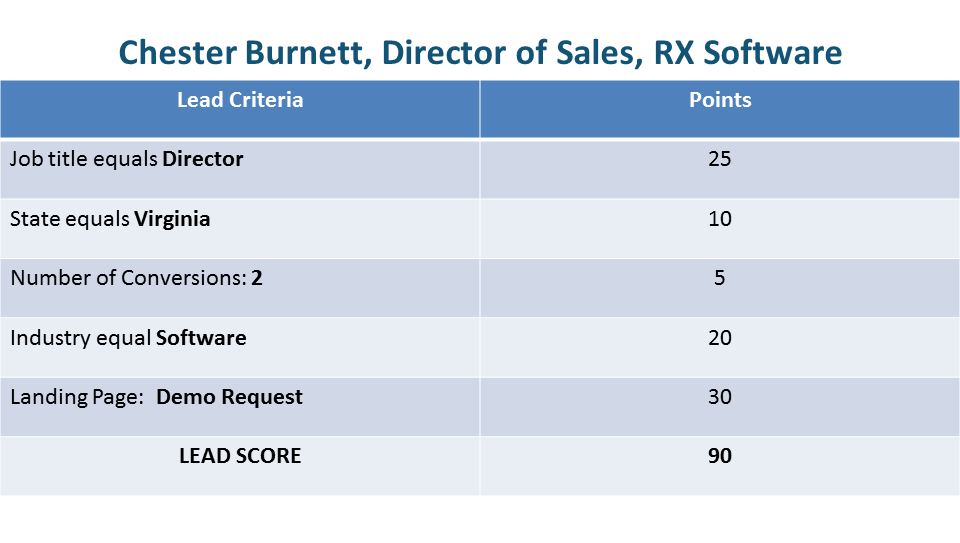
 HubSpots SVP of Sales, Mark Roberge teamed up with Salesforces VP of Social Media and Video, Jamie Grenney to present a webinar entitled, How to Grow Your Business with Social and Inbound Marketing. Roberge and Grenney laid out a data-driven approach to social and inbound marketing with one goal in mind: maximizing sales resulting from the marketing plan. The recommended plan for social and inbound lead generation consisted of four components. This article focuses on the first component measuring marketing efforts to maximize return on investment.
HubSpots SVP of Sales, Mark Roberge teamed up with Salesforces VP of Social Media and Video, Jamie Grenney to present a webinar entitled, How to Grow Your Business with Social and Inbound Marketing. Roberge and Grenney laid out a data-driven approach to social and inbound marketing with one goal in mind: maximizing sales resulting from the marketing plan. The recommended plan for social and inbound lead generation consisted of four components. This article focuses on the first component measuring marketing efforts to maximize return on investment.
Focus On The Metrics that Matter
While there are many social and inbound marketing metrics like fans, followers and retweets; there are three essential to business growth.
Maximize the Number of Leads You Produce from your Social and Inbound Marketing
A lead is a contact that has taken an action to receive information from your company and given you a means to contact them. The means of contact is usually an e-mail address, but can also be the contacts social media channels.
Track the sources of your leads regularly. For example, lead sources important to me are social media, organic search, website referrals and e-mail marketing. With HubSpots marketing automation software, Im able to drill down deeper to see exactly which marketing channels are producing leads. For example, I know the source of my social leads by the social media channel (LinkedIn, Facebook, Twitter). By monitoring this data carefully, you can focus resources on the channels most productive for your business.
Track your leads by marketing campaign. If you publish an eBook, video or webinar, analyze where your leads are coming from. Again, focus your efforts on productive channels and look for opportunities to improve performance on unproductive channels. By taking this approach with your leads, youll produce more and better leads.
Maximize the Number of Marketing-Qualified Leads
A marketing-qualified lead has converted on a resource that pushed them down the sales funnel they are ready to be passed along for sales interaction. While its important to maximize the number of leads at the top of the funnel, its more important to effectively qualify the lead before passing it along to the sales team. Here are some examples of marketing-qualified leads:
-
A director at a technology company with $5 million in revenues located in Virginia downloads an eBook. This is a marketing-qualified lead because the contact is a decision-maker at a company that matches your Ideal Customer Profile. This situation warrants a soft sales approach. If the prospect is not yet ready to buy, you can nurture him with e-mail marketing by introducing other resources that help him progress through the business buying process.
-
A contact requests a free-trial, a demonstration or other resource that requires the interaction of a sales person. These are generally leads that are ready to buy. A best practice for landing-page design for these resources is to require more information than typically required you will likely ask for a telephone number and demographic information about the company (number of employees or annual revenues.)
Lead Scoring is a process used to determine if a lead is marketing-qualified. Lead scoring analyzes the lead on two dimensions: How closely it matches your Ideal Customer Profile and the level of engagement with your marketing effort.
Here is a sample lead score:

Its a best practice to assign monthly quotas for marketing to produce marketing-qualified leads just as sales is tasked with producing customers. When assigning quotas, its best to assign a metric that takes into account the quality of the lead. A good way to do this is to assign point quotas based on your lead scoring process.
Maximize Sales
A sale is when the lead becomes a customer, resulting in revenue for your company. As is the case with leads and marketing-qualified leads, it is critically important to close the loop and monitor the same metrics for sales. What campaigns are producing sales? If it's social media, is LinkedIn producing the most sales? The answers to these questions provide the basis where you can focus resources on productive campaigns and make improvements to unproductive campaigns. Pay close attention to the conversion rates from marketing-qualified leads to sales because that is where you invest resources in terms of sales people. If your sales conversion ratio is low, you may need to re-configure your lead scoring system.
In summary focusing on those three metrics lets you set goals and manage your sales and marketing process so that it produces maximum ROI. My next blog article will be a continuation of the summary of the HubSpot/Salesforce presentation.









